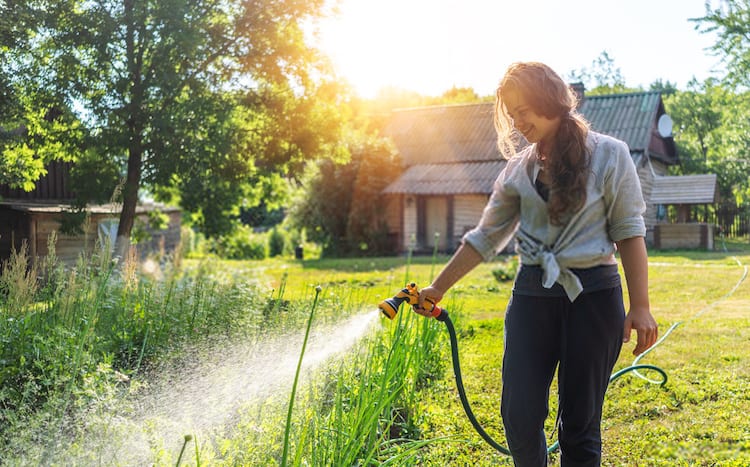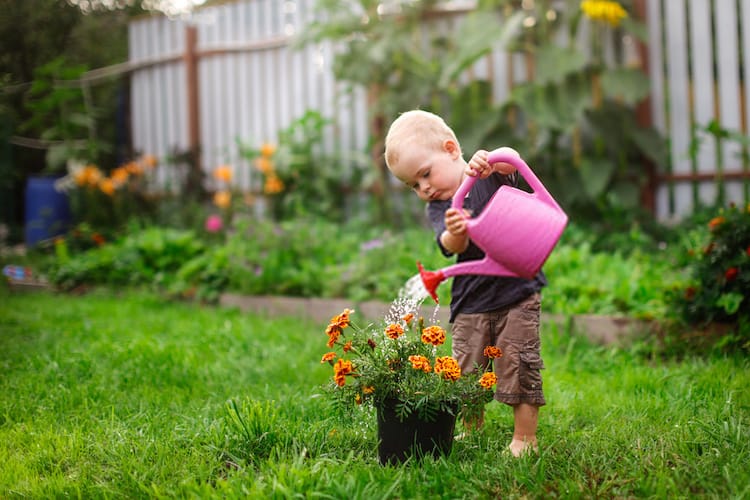How do I fix an overwatered plant? This is one of the numerous questions we often get from our esteemed readers. And we decided to address it here today.
The mistake of overwatering plants is not limited to newbie growers; even experienced gardeners often get their fair share. Unfortunately, overwatering is one of the leading causes of some problems seen in plants, such as yellow leaves and stunted growth, which may eventually lead to death.
The first step to fixing an overwatered plant is to identify and determine how much damage has been done. For this reason, you must know the signs indicating overwatering and preventive measures to avoid overwatering.
This article shows you tips on how to fix an overwatered plant.
Read Also: Does Baking Soda Kill White Powdery Mildew?
Table of Contents
Signs of Overwatering Plants
The symptoms of an overwatered plant are similar to that of an under-watered plant. Still, you can easily spell out the difference by checking out the root and the drainage system.
That is why one of the best practices of identifying the signs of an overwatered plant is by taking the plant off its container and carefully inspecting the roots.
Healthy roots appear white, while unhealthy roots appear darker with a mushy texture. A general rule states the more colored the roots, the closer to dying the plant is.
Besides a damp soil, here are other signs to look out for.
Stunted growth
When the root of a plant is in drought, they can't transport water and essential nutrients to the other parts of the plants, especially the upper part. The root is the powerhouse from which different parts of the plant gets nutrient for optimum growth.
In the case of a breach in this transportation, the plants start to wilt and eventually die off. Pay close attention to plants struggling to produce new stems or leaves.
Observing this could be tricky considering plants could as well die from under-watering. However, in this situation, logical reasoning can be applied. Have you been watering your plants lately? If yes, then water is likely guilty of the experienced stunted growth.
Check if the leaves are bright green or yellow
A plant automatically begins to change color when overwatered. The color leaves transition from bright green to yellow as a result of lacking nutrients from its inability to photosynthesize because of excess moisture.
Look on the look for color transition, turning from bright green to yellow. It is also common to notice yellow spots or patches on the leaves.
Look for algae or molds on the leaves, base of the stem, or top of the soil. The presence of stagnant water in a pot may breed green algae, white mold or fungus on the surface or the base of the plant. Their presence is a clear sign that the plant is suffering from overwatering.
Dangers of Overwatering Plants
An overdose of water is the leading cause of death for plants, especially container plants with no drainage systems.
Plant roots take in more than just water. They are the transport structure responsible for taking in and distributing oxygen and other essential nutrients.
In situations when you overwater your plant, you are creating a damp environment for the plant's roots, surrounded by excess water; the roots begin to drown, causing them to choke.
When this happens, there is a gas blockage, they can neither absorb water or oxygen, and without these essentials, your plant continues to choke and eventually dies.
Overly wet soil also encourages the growth of infections like rot-which is a fungus. If not tackled, root rot can kill a plant in less than ten days.
By obstructing the flow of oxygen into the root zone, overwatering creates an anaerobic environment in which infections, rots, and disease pathogens grow and thrive.
Overwatered Plants | Causes and Preventive Measures
No one intentionally wants to drown or kill their plants; in fact, we see it as an act of care when we water our plants. However, it is best to understand your plants and the language they speak so you can care for them the best way possible.
In the first place, it is better to prevent overwatering than having to fix an overwatered plant. Having a good understanding of why overwatering happens will assist you in taking the right steps in preventing it.
Here are some of the various causes of overwatering plants:
Frequent Watering
Frequent watering is the first and most apparent cause of overwatering. For newbie growers, this may take some experience to understand that overwatering your plants is not the solution to every challenge it faces.
Luckily, there are some gardening tools that can assist you in determining the right time and amount of water your plant's soil needs at an exact time, such as the ones listed here.
Another reason overwatering can happen is when you are caring for a group of house plants together.
Plants have different individual water requirements: For example, the way a Peace Lily reacts to water may not be the same way a succulent will respond. So, the general rule of thumb is to ensure to check the soil before watering.
Plant Type
Different plant species vary in their water requirement. So it is essential you carefully learn about each plant. Putting all your plants in the same watering schedule is a recipe for disaster.
To avoid the risk of overwatering plants, learn to tailor their watering schedule according to their water needs. Ensure to see that each plant is individually monitored.
Temperature
Water tends to evaporate a lot faster in warmer temperate conditions than in colder conditions. So, If your watering scheduled is based on warm temperatures, you might want to make some modifications in colder temperatures.
Type of Pot Material
For potted plants, to prevent overwatering, you have to go with an absorbent pot material, having holes to allow water to drain out and the soil to breathe correctly. A plastic container works well in sealing moisture in and prevents the soil from drying up quickly.
Ensure your plant is rooted in a pot with drainage holes. If necessary, you can repot the plant.
Let's now address the question: How do I fix an overwatered plant?
How Do I Fix An Overwatered Plant?
The first thing you want to do to fix your overwatered plant is to check for standing water on the soil, if there is any, tilt the pot sideways until all the water is drained out.
Next, move your plant to an area with plenty of shade. Check and remove dead or dying leaves, also trim off dead and unhealthy roots.
Increase air circulation to increase soil drying and allow oxygen to reach the root zone.
You will also want to repot the plant into a different pot with a porous material. Use this opportunity to change the soil type. Ensure to use a suitable soil type this time: sandy soils are known to improve drainage, whereas clay soil retains moisture.
Begin watering when the soil is dry to touch. But do not let it get too dry either as this may kill the plant.
Treating with a fungicide has also proven to be helpful.
Read Also: What Not to Plant With Tomatoes
Conclusion
Hopefully, your question on "how do I fix an overwatered plant" has been adequately answered here.
There is no full guarantee that your plants can survive from overwatering, which is why it is essential for you also to apply the preventive measures provided in this article.
However, the survival of your plants partly depends on how quickly you notice and attend to the overwatered problem without delay.
The techniques you used in caring for the plants during the recovery process also matters. All these are essential, and they contribute significantly to the survival rate of an overwatered plant.
Remember, the first rule of thumb when you noticed you have been overwatering your plants is to STOP watering immediately.







Leave a Reply